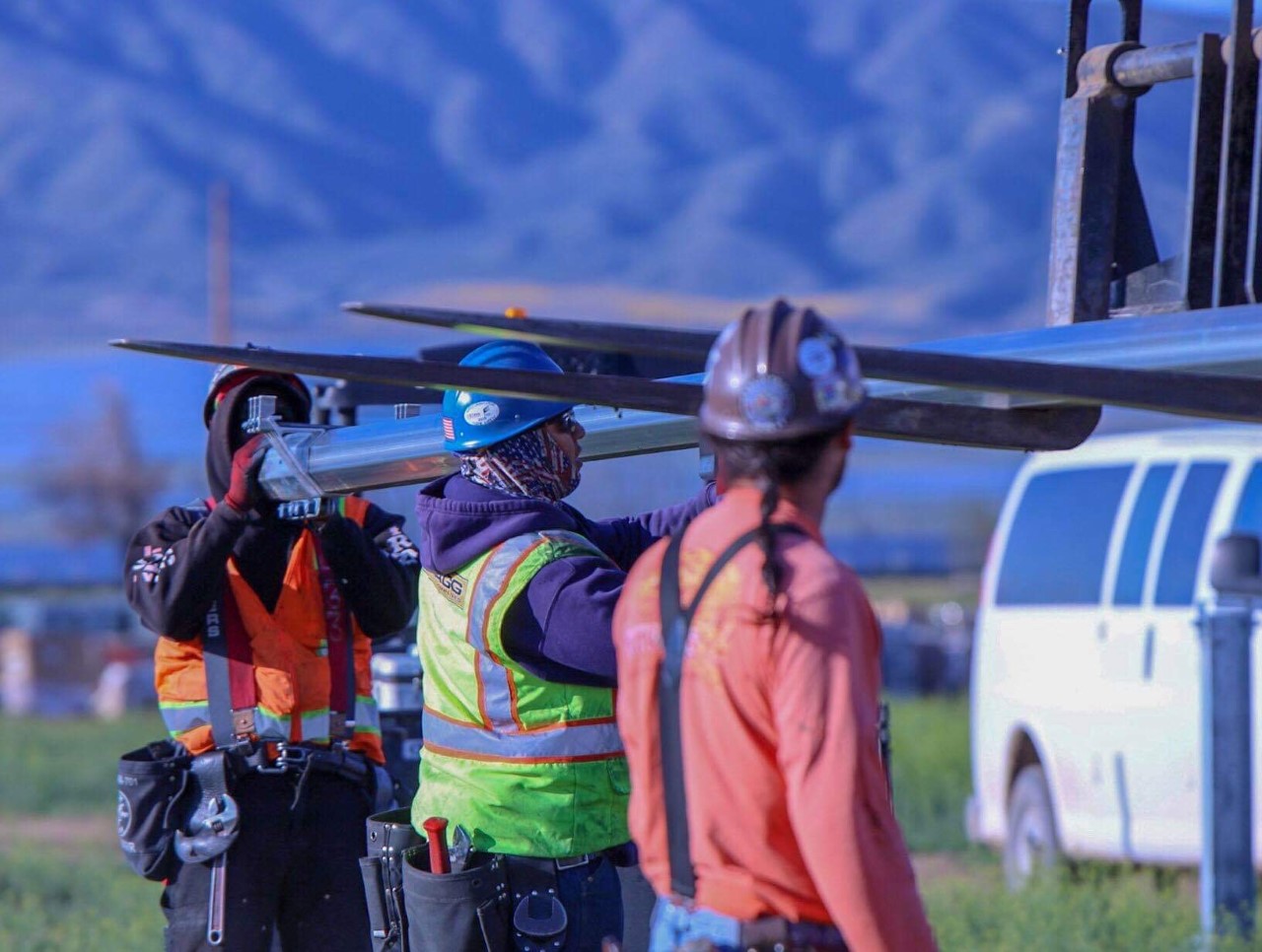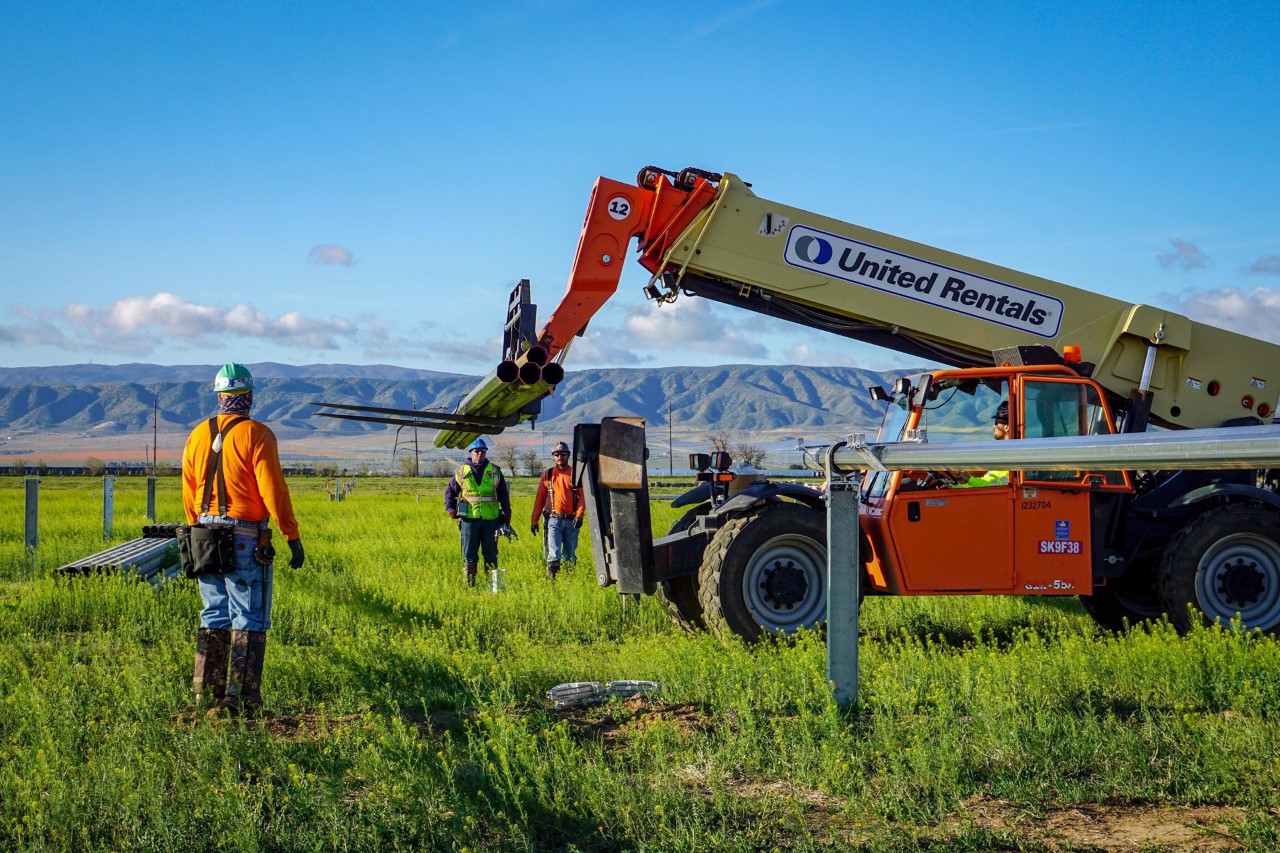Building Trades Lead California's Clean Energy Future
Last year, U.N. Secretary-General Antonio Guterres warned that the world is facing "a direct existential threat" and must rapidly shift from dependence on fossil fuels by 2020 to prevent "runaway climate change." Many nations in the world are falling behind on their commitments to combat climate change. In the U.S., the EPA announced plans to roll back limits on methane emissions. Under the Trump administration, 85 percent of environmental rules are being rolled back.
 While the country is taking a step back in combating climate change, California - the fifth largest economy in the world - stands out in climate change action. California state governor Jerry Brown recently signed into law the Senate Bill 100(introduced by state Senator Kevin de León, D-Los Angeles), mandating that all of the state's energy come from clean power sources by 2045. In 2015, Hawaii signed a similar bill into law.
While the country is taking a step back in combating climate change, California - the fifth largest economy in the world - stands out in climate change action. California state governor Jerry Brown recently signed into law the Senate Bill 100(introduced by state Senator Kevin de León, D-Los Angeles), mandating that all of the state's energy come from clean power sources by 2045. In 2015, Hawaii signed a similar bill into law.
The California mandate does not lay out a particular roadmap for reaching the goal. Energy sources considered clean power under the law include solar, wind, geothermal, biomass, small hydropower, renewable gas projects, wave, ocean current, and waste conversion. Nuclear power and large hydropower projects are not considered clean energy.
The legislation requires California to meet 50 percent of its energy needs with clean power by 2025, and 60 percent by 2030, before reaching the 2045 goal of 100 percent. California is already on track to reach its clean power goal with an estimated 32 percent of clean retail energy. Although meeting 100 percent of energy needs with clean sources by 2045 will be a challenge, supporters believe that setting an ambitious target will set off new rounds of investment and research. California will have to figure out how to move beyond natural gas, which is currently the largest source of electricity in the state.
Solar is the most widely deployed renewable energy source in the state. Both solar and wind energy are weather-dependent renewable power sources, only generating energy when the sun shines or the wind blows. Geothermal can play a key role in getting fossil fuels off the grid. However, most energy experts believe that the most cost effective and feasible way to reach California's clean energy targets, is by combining an expanded and better-connected transmission power grid system (that makes it easier to share electricity across states) with large-scale, high-capacity energy storage systems. California Energy Storage Alliance, estimates that the state will need to procure an additional 9,604 megawatts of storage capacity to meet its needs.
A UC Berkeley Center for Labor Research and Education study revealed that California's clean energy policies have been an "economic boon" to the region, resulting in a net gain of over $13 billion, and over 37,000 jobs. According to University of California at Berkeley Labor Center, the construction of renewable energy infrastructure created 90 percent of 88,000 jobs in the San Joaquin Valley between 2012 and 2015. The demand for additional gigawatts of solar and wind energy, high-capacity energy storage systems, and better-connected power grid systems, creates thousands of new jobs, which means millions of work hours for the skilled building trades.

According to Iron Workers District Council of the State of California and Vicinity, over 15,500 megawatts of photovoltaic solar construction have been secured for union construction. Over 9,000 megawatts have been completed, and the rest is under construction.
Following the recession in 2008, when jobs were scarce, California's clean energy policies have been creating jobs for the ironworkers in solar energy since 2013. IW local unions in California started working on solar projects that popped up across the valley - fueled by California's clean energy policies. They have been at the forefront of getting California on track to reach its goal of 100 percent clean electricity by 2045. They have worked on over 300 clean energy projects, and completed well over 1 million work hours on those projects since 2012. When oil barrel prices fell, the building trades unions in California put displaced workers back to work on solar and wind projects. They continue to recruit displaced oil industry workers for renewable energy projects. Far from being job killers, climate change regulations have helped California create thousands of new jobs, and a thriving clean energy economy.
Donald Zampa is the president of the Iron Workers (IW) District Council of the State of California and Vicinity. During his 40-year career as an ironworker, he served as an organizer, president and business manager of Iron Workers Local 378 in Benicia, Calif. He was appointed a general organizer of the Iron Workers International in 2006. He was appointed president of the California and Vicinity District Council in 2015 and vice president of the California Labor Federation and vice president of the Iron Workers International in 2016.
International Association of Bridge, Structural, Ornamental and Reinforcing Iron Workers | www.ironworkers.org
Author: Donald Zampa









.png?r=2313)


